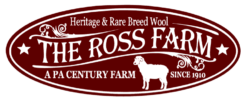Our Animals
Horses
Clydesdale

The Clydesdale is a large drafthorse breed, with individuals standing between 16.2-18 hands at the shoulder – that’s 66-72″! The history of the breed goes back to the 1700s, and they were first brought to America in the 1840s. The Anheuser Busch Company of St. Louis, Missouri was critical to the survival of the breed in the 1950s and 1960s. Clydesdales are a well-known but uncommon breed, with fewer than 5,000 individuals registered globally. Our Clydesdale Gates, pictured above, came to us from Walt Disney World, where drafthorses are used during parades and other events.
Donkeys
Mini Mediterranean Donkey

Miniature donkeys first came to American in the 1920s, when seven Sardinian donkeys were imported by a New York stockbroker. Their numbers remained relatively small until the late 20th century, with the formation of the National Miniature Donkey Association in 1990. Their small size and curious nature has made the Miniature Donkey into a popular pet, especially for children. North America now boasts 10,000-15,000 individual donkeys, but their numbers are declining in their ancestral homes on the Mediterranean Sea. For that reason, it is important that North American breeders continue to conserve the genetic material of the breed.
Cattle
American Milking Devon

The plight of the American Milking Devon was the reason behind the formation of the American Livestock Conservancy. Pilgrims originally brought the breed to New England from their ancestral home in Devonshire, England, and over the centuries Milking Devons spread as far south as Florida, and into the west along the Oregon Trail. Beginning in the 1800s, the breed slowly began to be replaced by the Shorthorn, and by the 20th century many Milking Devons had been bred for beef production. A small subset of traditional Milking Devons raised for dairy production survived, and since the 1970s farmers have made a distinct effort to preserve this historic breed. Today, more than 500 indivual cattle are registered.
Sheep
Romeldale/CVM
The Romeldale sheep is a fine-wool breed, and the California Variegated Mutant (“CVM”) is the colored derivative of the breed. Romeldales were established in the early 1900s by crossing Romney with Rambouillet, and CVMs first began to appear in flocks in the 1960s. Wool with a soft hand was prioritized by the early shepherds, along with high rates of twins and maternal ability. While Romeldale/CVM sheep were never very numerous, today there are quite rare. Their wool continues to be valued by industrial producers and handspinners alike.
Sheep
Florida Cracker
Florida Crackers are an exceptionally old breed. Much like the Gulf Coast Native, they are thought to be descended from sheep brought to the Americas by Spaniards in the 1500s. The existence of the Florida Cracker was threatened in the mid 1900s, when sheep farmers turned towards larger sheep with a higher meat and wool yield, causing the number of Florida Crackers to rapidly decline. With a move towards low-input, sustainable agriculture, Florida Crackers are becoming popular once again. Their short-stapled fleece can’t be commercially spun, but handspinners will be charmed by this soft and elastic wool.
Sheep
Gulf Coast Native
Gulf Coast Natives are descended from a mix of sheep breeds brought to the Americas by Spaniards in the 1500s. They were spread across the southeast by Spanish missionaries, Native Americans, and European settlers as far north as the Carolinas. They are extremely heat tolerant, and are resistant to gut parasites, and other diseases that commonly affect sheep. Private efforts have been underway since 1995 to inventory and register Gulf Coast Natives across the southeast.
Sheep
Hog Island
Hog Island sheep naturally developed on the barrier island off the coast of Virginia, due to the isolated population living on the island since the 1700s. In the 1930s, a string of hurricanes chased the people off of Hog Island, where they left their sheep to forage and thrive as they had for centuries. The Nature Conservancy removed the last of the sheep from Hog Island in 1978. Most Hog Island sheep currently reside at living history museums. Their wool is medium length, springy, and naturally sheds off the sheep if they aren’t shorn.
Sheep
Cheviot

Cheviots are a hardy little sheep that developed on the windswept hills between England and Scotland, as early as the 1300s. You can usually spot a Cheviot by their wool-free head and “bunny ears.” They have a soft fleece with a 3″-5″ staple length, a good working length for handspinners. Cheviot wool was traditionally used to knit kilt hose, and we carry a sport weight yarn that is ideal for that purpose.
Sheep
Romney

Romneys are traditionally a true dual purpose breed, but we call ours “wool tanks.” Their fleeces grow in long, separated locks that have the luster of a longwool, with a finer micron count. Naturally colored Romneys come in a range of black, gray, silver, brown, and white.
Sheep
Shetland

Shetlands are fine-boned, small, and produce a lovely fleece in 11 different colors and 30 different coat patterns. We use wool from our Shetland flock to make a gorgeous line of sport weight yarn that is perfect for stranded colorwork.
Sheep
American Jacob

Jacob sheep are known for their spots, which can be black, brown, or lilac. They’re also known for their impressive horns – they can have two, four, or even six. American Jacobs have a light, open, medium length fleece that lends itself well to beginning spinners.
Sheep
Leicester Longwool

Our Leicester Longwool herd got their start from sheep being kept at Colonial Williamsburg, where a breeding program was started in 1990. Our flock currently has about 50 purebred Leicester Longwool rams and ewes. These sheep are known for their lustrous, strong wool.
